|
|
|

Location
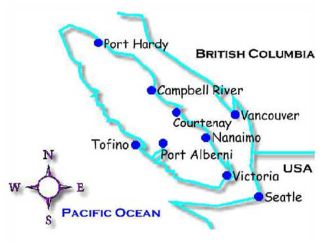
Title
Maps
-
VWVulcan
is in the final phases of a comprehensive search of the
complex titles and rights that is one of the major challenges in development
of a large project such as this.


-
The
link below goes to a page that will be updated regularly with current details
on the state of the title search.

Proximity to Gas Lines
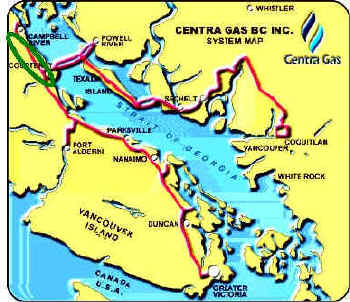

Historic Overview
-
Exploration conducted by BP in the mid 80's in the Nanaimo area.

-
Over 500 cores drilled by coal owners seeking coal; all found gas, but no
measurements were properly taken.

-
180 kilometers of 2D seismic data, some 3D available (BP and Hillsborough
seismic).

-
Coal mines in this region have always had to vent gas to prevent explosions.

-
B.C. Geological Survey has carried out an extensive evaluation of the
Vancouver Island coal resources and gas content analysis.

-
Work was carried out in 1996 in the Tsable River area of the Comox Basin
(six wells drilled, gas content analysis).

-
The Cedar, Yellow Point BP wells encountered Comox coals in Nanaimo Basin at
5,000 feet. One of the wells was plugged and abandoned as result of
excessive gas pressures.

-
Survey results maintained by B.C. Geological Survey in Victoria, B.C. and
managed by Dr. Barry Ryan, Chief BC Coal Geologist.

-
VWV has conducted an extensive geological analysis with the assistance of
Calgary-based geologist Gwyneth Cathyl-Bickford. She has extensive
knowledge and insight of Vancouver Island geology.
CBM Potential
-
Coal rank is bituminous A & B.

-
Geology, rank, and depth all favor CBM presence.

-
Cumulative coal seam thickness is 23 feet.

-
Gas content is 200 to 400 standard cubic feet per ton, most likely higher (PRB
coal’s gas content averages 30 SCF/ton).

-
CBM values reported to date are from desorption tests, not sealed canister
tests, and therefore underestimate the CBM content.

-
Quinsam and Tsable River lands may contain 0.5 TCF to 1.0 TCF of CBM gas,
very possibly more, at average depth of 1,000 feet.

-
Drilling into deeper-lying coals (4,000 to 5,000 feet) may yield additional
CBM production (Yellow Point & Cedar BP wells).

-
Approximately 80 BCF have been identified by VWV from existing Quinsam
Mine core holes.

-
Estimated recoverable reserves 0.5 BCF/well, estimated life in excess of
fifteen years.
Test Phase
-
Ten-well test drilling program to prove gas producing potential of the
Tsable River coals.

-
180 km, 2D-seismic survey completed.

-
Geologic and engineering assessment to determine:
-
Isopachs and extent of major seams
-
Faults and folds
-
Coal bed reservoir (aquifer) water elevations
-
Sorbed CBM values, SCF/ton of coal in place
-
Permeability values of coals
Drilling
-
If the initial test wells confirm production capacity, then: Drill, complete and set compression for 500-600 wells
Time to build-out: five to six years from first production well
Well depths from 800 to 3,000 feet, with an average depth of 1,600 feet
Well spacing: one well per 120 acres
Project development drilling to match gas demand
Drilling will be carried out by conventional water drilling rigs available
on Vancouver Island.

-
The photograph at right (courtesy of the Bureau of Land Management, Buffalo,
Wyoming) shows a rotary/mud drilling rig. The project will use air drilling,
avoiding the mud pit and tailings pond.


Well Cross-Section
-
After drilling, the casing is cemented in to prevent CBM from escaping from
the well or communicating with overlying aquifers.

-
The tubing, tipped with a submersible electric water pump, is then inserted
to allow the water to flow from the bottom of the hole.

-
CBM exits the well through the annulus formed by the casing and the tubing.


Trenches
A conventional trencher is used to prepare the trenches for gas lines and
water drainage lines.

 Wellheads Wellheads
-
The well is fitted out with the required plumbing.

-
The well pod is cleaned up and the wellhead protected by a fiberglass
enclosure. Electrical power to operate the pump is brought in and connected.

-
In cold climates such as Calgary and Northern Wyoming, automatic wellhead
heaters are installed, fueled by the well’s CBM.



 Gathering Pods Gathering Pods
-
The gathering lines meet at one of several pods, where the gas is metered
and routed into a header pipe for delivery to the compressors.

-
The pod is shielded by a pre-fabricated enclosure which is color-coordinated
with the surroundings.

-
Gas flow is monitored and recorded.

 Gas Compression Gas Compression
-
Gas flowing from the collection pods is delivered to a high-pressure
compression station or stations.

-
Depending on the wellhead pressure, the CBM may be collect by a low-powered
screw compressor and passed on to an intermediate reciprocating compressor.
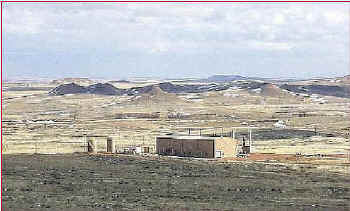

 Production Phase Production Phase
-
On average, each well is anticipated to produce 150MCF of CBM per day.

-
Anticipated peak daily gas production of 80 MMCF cubic feet.

-
Through 2015, all wells expected to produce a total of 0.25 TCF of gas
– approximately a quarter to one half of the projected 0.5-1.0 TCF
recoverable CBM resource.

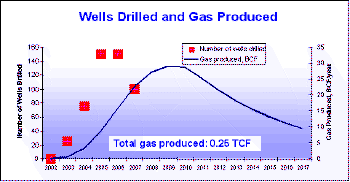

 Water Production Water Production
-
Initially, wells are anticipated to produce at a rate of 9 gallons of water
per minute (compared with a typical PRB well of 12 gallons per minute).

-
Water production is anticipated to decline exponentially. This is a
characteristic found in most CBM wells.

-
Actual water production curves will be refined on the basis of data from the
initial test wells.

-
Water quality is currently being evaluated, and a water disposal method
compatible with the actual water chemistry will be implemented.
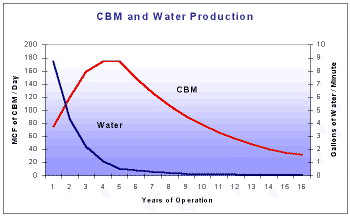

 Closure Phase Closure Phase
-
Each well, at the end of its economically viable life, will be de-activated
and plugged, and the wellhead area reclaimed.

-
If desired, wells may be reconfigured into water wells for residential or
commercial use.

-
At the end of the project’s life, anticipated to be at least fifteen years,
all infrastructure will be disassembled and removed, and building and well sites
will be reclaimed.

-
Plugging and abandoning procedures will follow generally accepted industry
practices, differing only to accommodate community needs.
|
|
|

